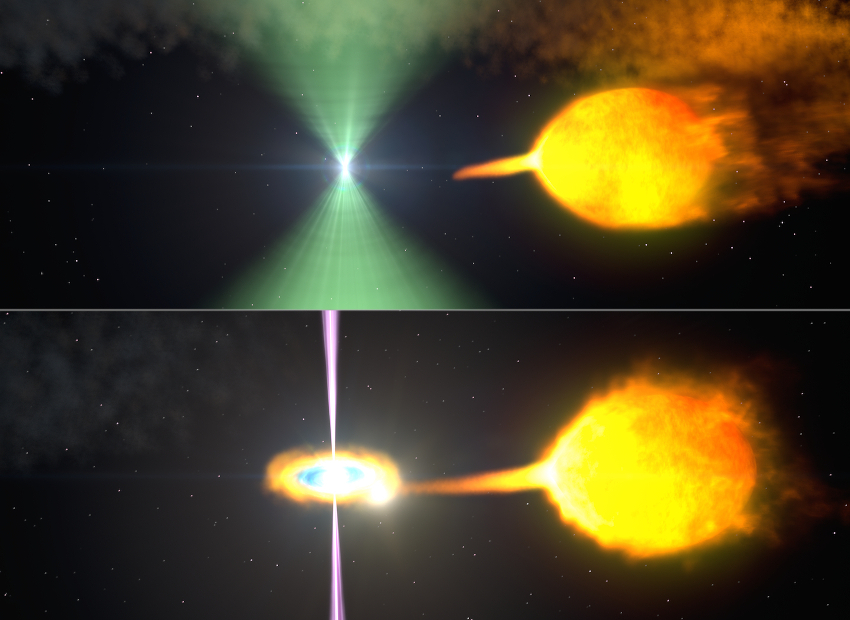
 Credit: NASA's Goddard Space Flight Center
Credit: NASA's Goddard Space Flight Center
Transformer
Neutron stars are generally identified as radio-emitting pulsars or X-ray binaries. Pulsars are rapidly spinning neutron stars that emit radio jets from their magnetic poles. In an X-ray binary, material is stripped from a companion star by a neuton star's gravitational pull, and, as it spirals onto the neutron star, it gets heated up to X-ray emitting energies. Astronomers, using the Fermi Gamma-ray Space Telescope, have recently identified a weird hybrid: a neutron star system that's normally seen as a radio pulsar, flashing hundreds of times per second, but sometimes the radio flashes disappear entirely, and the system glows bright in high energy X-ray and Gamma-ray radiation. Astronomers believe that they are witnessing a battle between the mass transfer stream from the companion star and a strong, energetic "pulsar wind" from the neutron star. Typically, the pulsar wind is strong enough to hold off the stream of material from the companion star. But sometimes, for some unknown reason, the mass stream overwhelms the pulsar wind, and the large infall of material from the companion smothers the radio emission. The infalling material forms a hot accretion disk, with powerful X-ray and Gamma-ray emitting jets beamed normal to the disk. At some point, the pulsar wind overpowers the mass stream, the X-rays shut off, and the system once again appears as a pulsar. The image above is an artistic view of this change in identity, before (top) and after (bottom) the radio beacon (shown in green) is smothered by the mass transfer stream. Astronomers believe this is a rare opportunity to observe a neutron star system in a short-lived stage of evolution. Mass transfer may spin up the neutron star to an even shorter rotation period; eventually the pulsar wind may entirely ablate the companion star.
Published: September 15, 2014
<
HEA Dictionary ● Archive
● Search HEAPOW
● Other Languages
● HEAPOW on Facebook
● Download all Images
● Education ● HEAD
>

Each week the HEASARC
brings you new, exciting and beautiful images from X-ray and Gamma ray
astronomy. Check back each week and be sure to check out the HEAPOW archive!
Page Author: Dr. Michael F. Corcoran
Last modified Monday, 26-Feb-2024 17:24:12 EST


